Lisinopril Storage & Disposal Guide
Enter details about your Lisinopril storage and disposal situation to get personalized recommendations.
Storage Conditions
Expiration Status
Disposal Method
TL;DR
- Keep Lisinopril at room temperature (15‑30°C) away from moisture and light.
- Seal the bottle tightly and store it out of reach of children.
- Check the expiration date regularly; discard any expired pills.
- Use a drug‑take‑back program whenever possible; if not, mix pills with unpalatable waste before trashing.
- Never flush Lisinopril unless the FDA specifically advises it for a particular batch.
Whether you’ve just filled a new prescription or are looking at a bottle that’s been sitting on your nightstand for months, knowing the right way to store and dispose of Lisinopril storage can prevent waste, protect loved ones, and keep the environment safe.
Lisinopril is a prescription‑only ACE inhibitor used to treat high blood pressure and heart failure. Like any medication, its effectiveness and safety depend on how you keep it between refills and what you do with leftovers. This guide walks you through the science‑backed steps for proper storage, highlights legal disposal options, and offers practical tips to avoid unnecessary waste.
Why Proper Storage Matters
Medications are chemical compounds that can degrade when exposed to heat, humidity, or light. When Lisinopril breaks down, its potency drops, and unwanted by‑products may form. For a drug that controls blood pressure, even a small potency loss can mean insufficient dosing and a rebound in hypertension.
Research from the United States Pharmacopeia (USP) shows that most oral solid dosage forms remain stable for up to two years when stored at 20‑25°C (68‑77°F) with relative humidity below 60%. Exceeding these limits can accelerate hydrolysis, especially for ACE inhibitors that contain ester bonds.
Ideal Storage Conditions
Follow these simple rules to keep your pills in peak condition:
- Temperature: Store the bottle at room temperature-ideally between 15°C and 30°C (59‑86°F). Avoid places that experience temperature swings, like near windows, stoves, or in a car.
- Humidity: Keep the medication away from bathrooms or kitchens where steam can raise humidity. A dry cabinet or a closed drawer works well.
- Light exposure: Lisinopril tablets are usually amber‑colored to protect against light, but the bottle’s cap should stay sealed. Store the bottle upright, away from direct sunlight.
- Container integrity: Never transfer pills to a different bottle unless it’s a pharmacy‑provided, child‑proof container. The original packaging is designed to block moisture and light.
By maintaining these conditions, you’ll preserve the drug’s potency until the printed expiration date.
Understanding Expiration Dates
The expiration date printed on the label is the manufacturer’s guarantee that the medication will retain at least 90% of its labeled potency when stored as directed. After this date, the drug may still be safe, but its effectiveness can’t be assured.
Guidelines from the Food and Drug Administration (FDA) advise discarding any medication that is past its expiration date, especially for drugs that treat chronic conditions like hypertension.
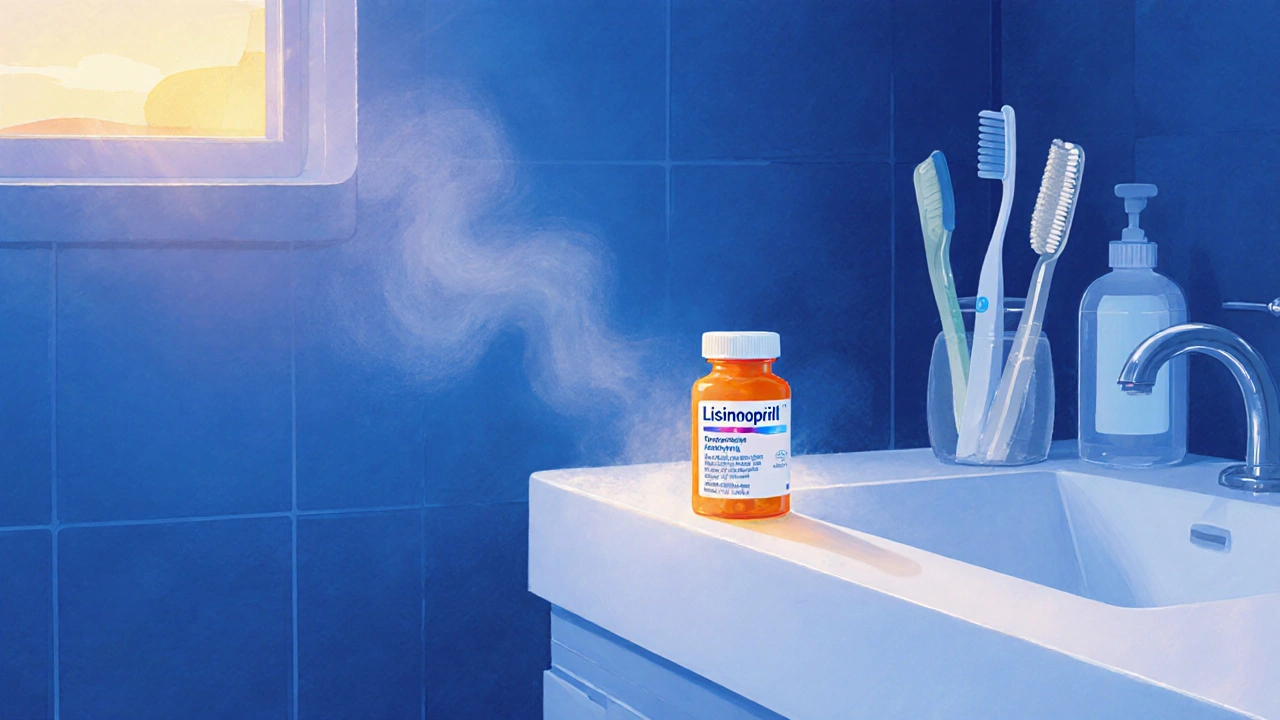
Handling Opened vs. Unopened Bottles
Unopened bottles are sealed in a moisture‑proof blister or bottle, providing the best protection. Once you’ve opened a bottle, each time you remove a pill the seal is compromised. To minimize exposure:
- Close the cap tightly after each use.
- Consider using a small pill organizer for daily doses, but keep the original bottle for long‑term storage.
- Check the cap for cracks or broken seals; replace the bottle if the integrity is compromised.
Safety First: Keep Medications Out of Reach
Children, pets, and even the elderly can accidentally ingest pills. Store Lisinopril in a high, locked cabinet or a child‑proof drawer. The pharmacy often offers lockable storage boxes for a small fee.
Legal and Environmental Disposal Options
When you have leftover Lisinopril, the goal is to prevent it from entering waterways or being misused. The FDA and the Environmental Protection Agency (EPA) outline several approved disposal pathways.
1. Drug Take‑Back Programs
Community‑run or pharmacy‑hosted drug take‑back programs are the gold standard. These events collect unused medications and destroy them in high‑temperature incinerators, eliminating any chance of environmental contamination.
To find a program near you, check local health department websites or ask your pharmacist. Many large pharmacy chains have permanent drop‑boxes that accept prescription drugs 24/7.
2. FDA‑Recommended Flushing (Rare Cases)
Only a small subset of medications are listed by the FDA for flushing when a take‑back option isn’t readily available. Lisinopril is not on that list, so you should avoid flushing it.
3. Household Trash (With Precautions)
If a take‑back program isn’t accessible, follow these steps before tossing the medication:
- Remove the pills from the original bottle.
- Mix them with an undesirable substance-coffee grounds, cat litter, or dirt.
- Place the mixture in a sealed, empty plastic bag.
- Discard the bag in your household trash.
This method makes the medication less appealing to pets, kids, or anyone who might rummage through trash.
4. Hazardous Waste Collection
Some municipalities designate unused medicines as hazardous waste. Contact your local hazardous waste facility to confirm if they accept prescription drugs.
Key Takeaways for Avoiding Waste
- Ask your doctor for the exact quantity you need-sometimes a 30‑day supply is enough.
- Set a reminder to check the bottle every two months; use any remaining pills before they expire.
- Keep a small “medication date tracker” on your fridge to see when each prescription was filled.
Quick Reference Checklist
| Aspect | Do This | Why It Matters |
|---|---|---|
| Temperature | Store at 15‑30°C (59‑86°F) | Maintains chemical stability |
| Humidity | Keep humidity below 60% | Prevents hydrolysis |
| Light | Keep bottle in a dark place | Avoids photodegradation |
| Expiration | Discard after printed date | Ensures potency |
| Disposal | Use drug‑take‑back program; if not, mix with waste and trash | Prevents environmental contamination |
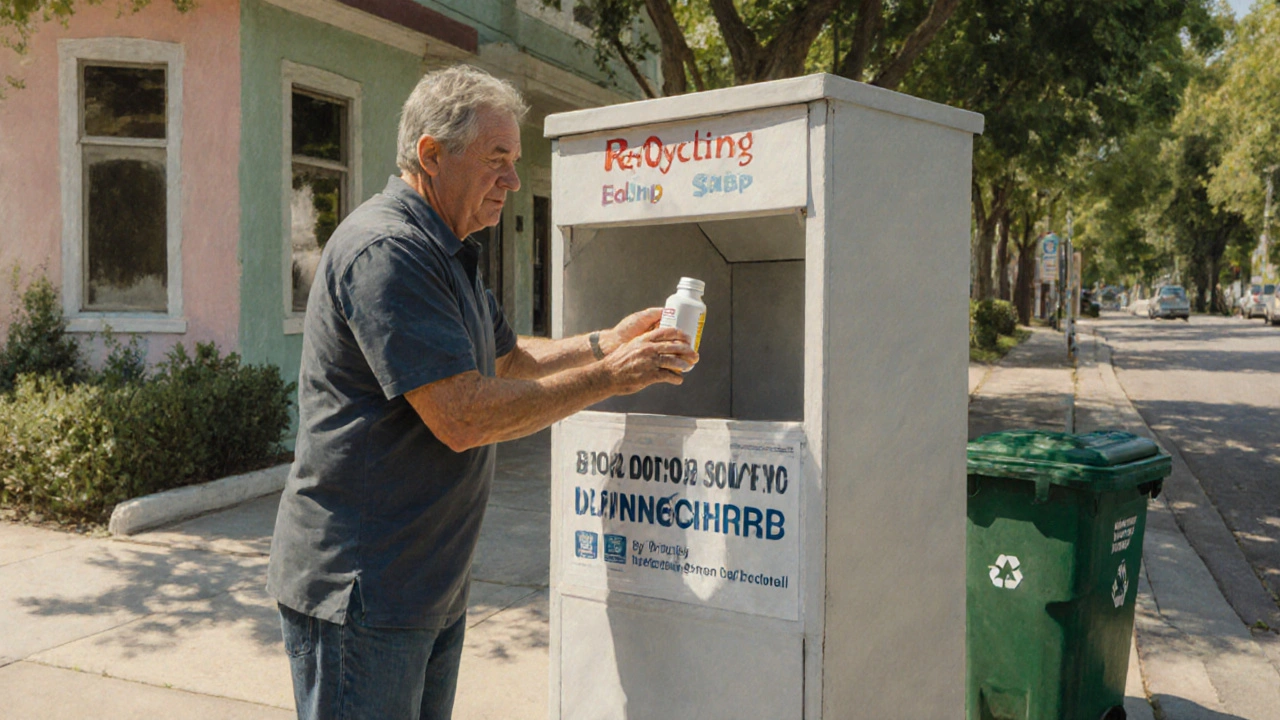
Frequently Asked Questions
Can I keep Lisinopril in the bathroom cabinet?
It’s not recommended. Bathrooms often have high humidity and temperature fluctuations that can degrade the medication. Choose a dry, cool place instead.
Is it safe to share leftover Lisinopril with a family member?
No. Lisinopril doses are individualized based on blood pressure, kidney function, and other meds. Sharing can lead to under‑ or overdosing and serious side effects.
What if I can’t find a drug‑take‑back site nearby?
Mix the pills with something unappealing (e.g., coffee grounds), seal them in a plastic bag, and place them in the regular trash. This reduces the risk of accidental ingestion.
Does freezing Lisinopril extend its shelf life?
Freezing is not advised. Extreme cold can cause condensation when the bottle is opened, introducing moisture that harms the tablets.
My child found an opened bottle-what should I do?
Contact your local poison control center immediately, even if the child seems fine. Keep the bottle for reference when you call.

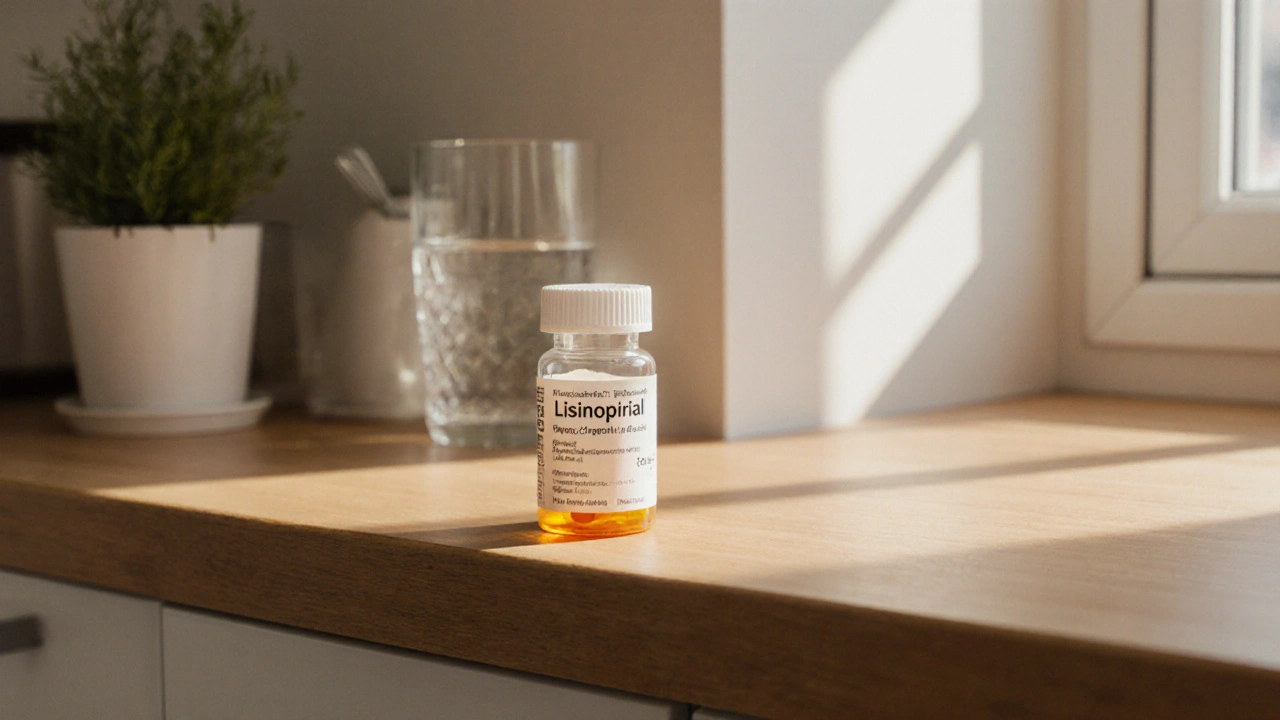

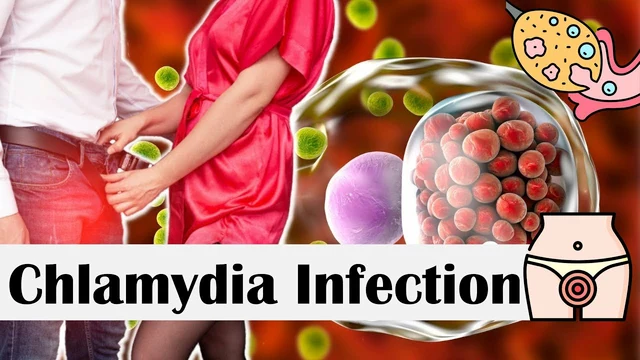
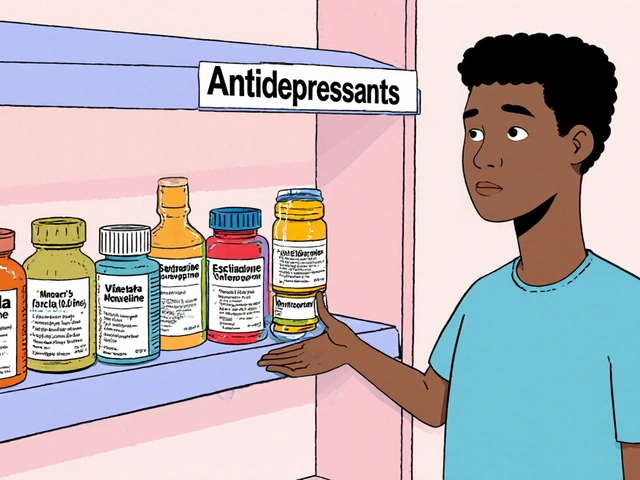


September 29, 2025 AT 01:28
Great rundown on Lisinopril storage! 🌟 Keeping the meds in a cool, dry place really does the trick, and your checklist makes it super easy to follow. Thanks for putting the safety tips in one spot-you’ve saved me a lot of Googling. 🙌